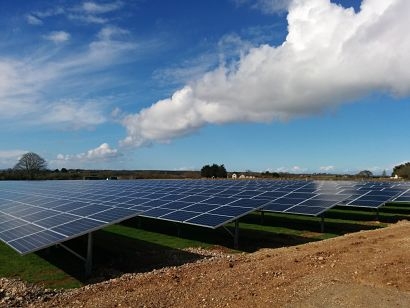
PACE has completed detailed market and technical analysis in Poland over the last 18 months and has identified and advancing its first 100 MWp of early stage solar projects. The PACE Poland office will be located in Torun, north of Warsaw, from where PACE will co-ordinate its development and acquisition of projects across the country.
The move by PACE coincides with the Polish Government’s publication of its Energy Policy to 2040, which will see a reduction in coal generation (72 percent generation market share to 56 percent by 2030) and an increase in renewables - offshore wind, onshore wind and solar. PV solar capacity is targeted to increase from 3.6 GW to 5-7 GW by 2030, with 20 GW of PV solar installed by 2040. Last year, PV solar capacity tripled, so some commentators consider the 2030 target to be a conservative one.
Poland will be the fourth market PACE has established an office since its formation in 2017 and adds to its existing over-1 GW development pipeline - with the first 67 MWp of UK projects due to enter operation this year (2021).
PACE Poland’s initial portfolio of 100 MWp of solar is across the north of Poland, connecting to the high voltage grid lines with the Enea and Energa Grid Operators. Subject to planning and financing, PACE’s first phase of projects should be able to achieve connection from 2022.
‘‘Over the last 18 months, we have worked to digitise the constraints in the country to enable our team to evaluate opportunities quickly and identify the first 100 MW of potential projects that is our core minimum threshold for any new market” said Alex Ross, Development Director of PACE. “This hurdle has now been reached. Poland’s development process does have its challenges with certain grid confirmations coming later in the process but given the Government’s policy commitment to renewables and its 2030 targets, this is the right time for PACE to bring its expertise for the long term’.
Rob Denman, Managing Director of PACE, added that the company considers Poland as a core market for growth as the country reduces its reliance on coal generation and renewables becomes increasingly competitive and that required power generation in Poland is estimated at 244 TWh in 2050 to keep up with the expected consumption growth, driven by industry, households and transportation demand.
“This trend coupled with lower supply from conventional sources due to expected hard coal/lignite decommissioning is expected to create space for new clean energy capacity” Mr Denman said. “This market also benefits from EU policy and Polish regulatory framework support. PACE’s development and acquisition team is highly tech-led through its market-leading inhouse software to enable us to identify and manage risks on multiple projects and across our multiple markets and we are delighted to expand our interests into this exciting market”.
For additional information:

